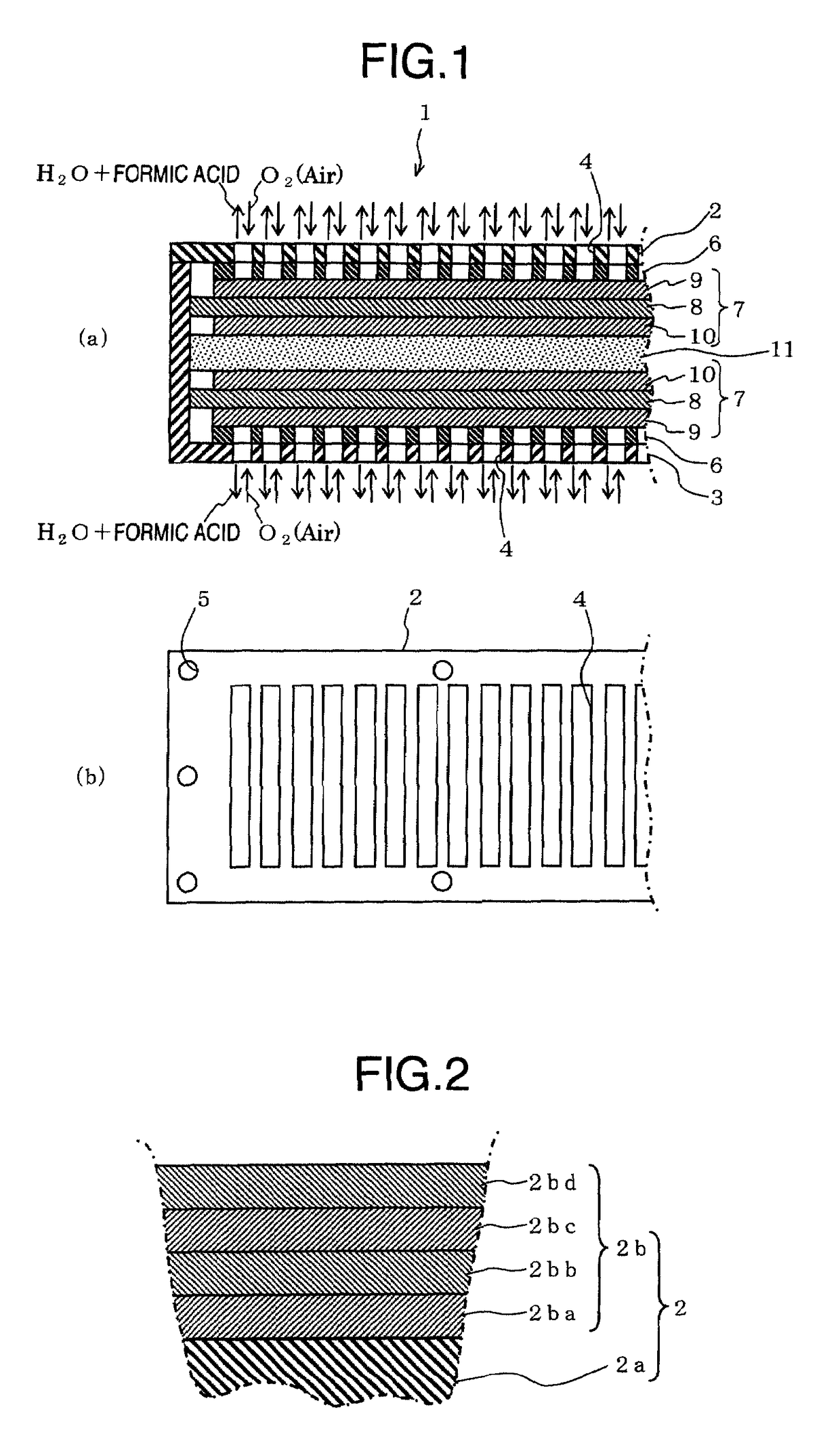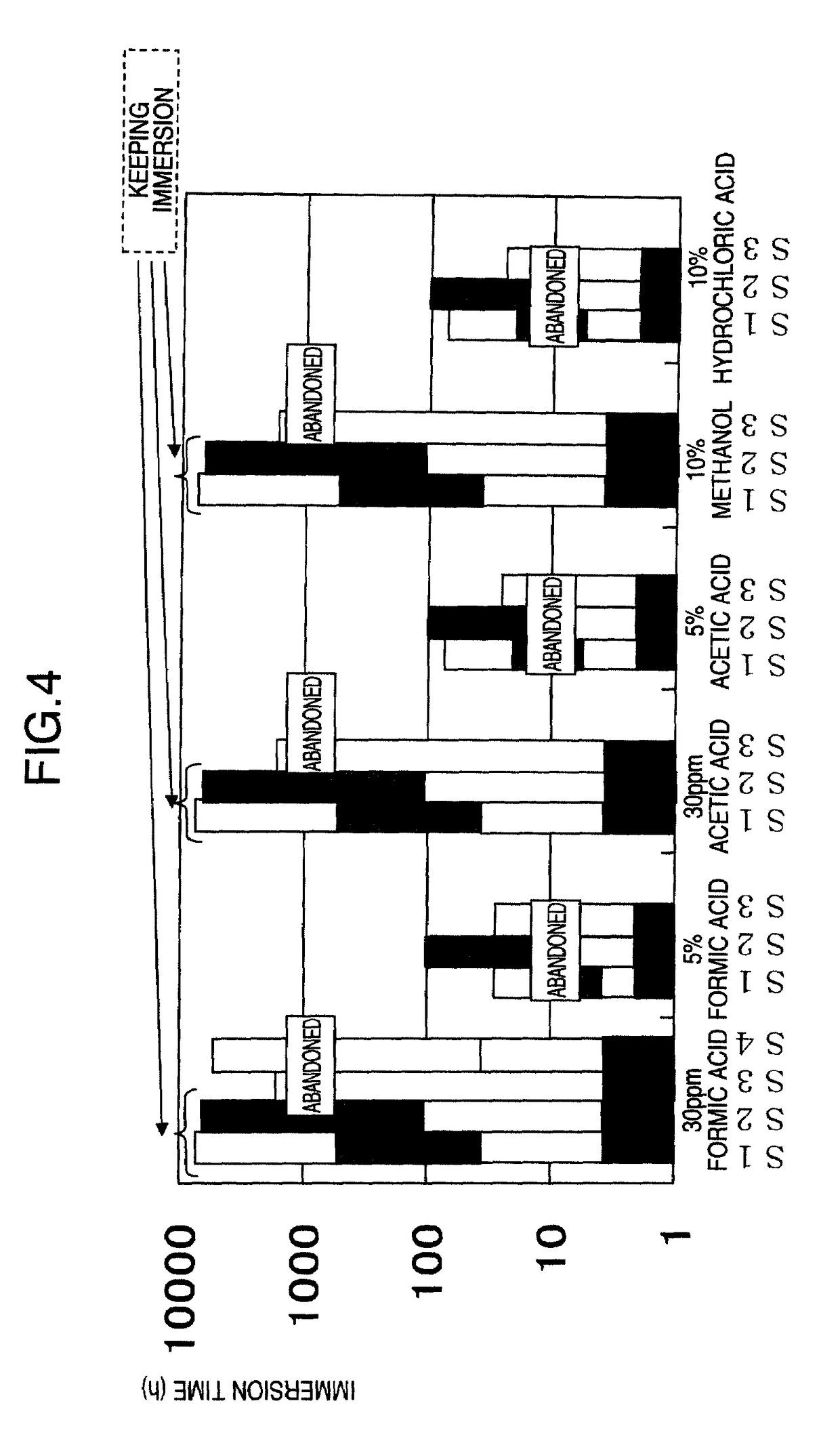Casing for fuel battery and fuel battery using the same
a fuel battery and casing technology, applied in the direction of cell components, superimposed coating process, cell component details, etc., can solve the problems of increasing the power consumption of the device, fuel cells using pefc are not suitable as power supplies for electronic devices, fuel cells are also not suitable as power supplies for portable devices, etc., to prevent corrosion and discoloration of the casing, prevent corrosion and discoloration, and easy to suffer from corrosion
- Summary
- Abstract
- Description
- Claims
- Application Information
AI Technical Summary
Benefits of technology
Problems solved by technology
Method used
Image
Examples
example 2
[0049]Next, the coating was improved for the purpose of increasing its corrosion resistance to each of the solutions of 5% formic acid, 5% acetic acid, and 10% hydrochloric acid. As a result of investigation, it was found that the corrosion and the discoloration are caused because aluminum flakes contained in a coating material for forming an overcoating layer (color coating) react with the immersion solutions. DMFCs are mounted on compact and portable devices, and DMFCs preferably have metallic appearances similar to the appearances of the devices in terms of design. To impart metallic appearances to DMFC casings, metallic particles such as aluminum flakes are added to coating materials used for color coating.
[0050]In Example 2, a coating was prepared to have the configuration of experimental sample S2: (a)+(b) 20 μm+(c) 20 μm where the (c) overcoating layer was formed by using HALS hybrid resin baking type coating material (base compound name: Acryo #BK6500). The base compound is ...
example 3
[0073]Hereinafter, there is described an example according to the present invention. By using the production method described so far, a magnesium alloy member was produced by subjecting a Mg alloy to the steps up to the Al plating step and the heat treatment step. The magnesium alloy member and comparative example magnesium alloy members having similar structures were compared in respect to generation of the separation between the layers and corrosion resistance to corrosive solutions.
[0074]The separation (adhesion) was evaluated as follows: slits were made with 1.5 mm pitches on the surface of an evaluation sample (magnesium alloy member) to form 10×10 squares by using a cutter; cellophane tape was affixed to the squares; when the tape was removed, a square where separation occurs in 80% or more of the square area was defined as a “separated square”; the number of the “separated square” was counted; based on the result, the ratio of squares other than the “separated squares” was de...
PUM
| Property | Measurement | Unit |
|---|---|---|
| temperature | aaaaa | aaaaa |
| thickness | aaaaa | aaaaa |
| thickness | aaaaa | aaaaa |
Abstract
Description
Claims
Application Information
 Login to View More
Login to View More - R&D
- Intellectual Property
- Life Sciences
- Materials
- Tech Scout
- Unparalleled Data Quality
- Higher Quality Content
- 60% Fewer Hallucinations
Browse by: Latest US Patents, China's latest patents, Technical Efficacy Thesaurus, Application Domain, Technology Topic, Popular Technical Reports.
© 2025 PatSnap. All rights reserved.Legal|Privacy policy|Modern Slavery Act Transparency Statement|Sitemap|About US| Contact US: help@patsnap.com



